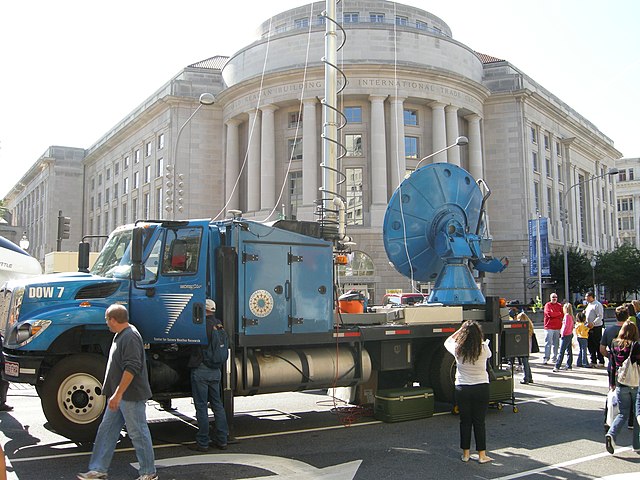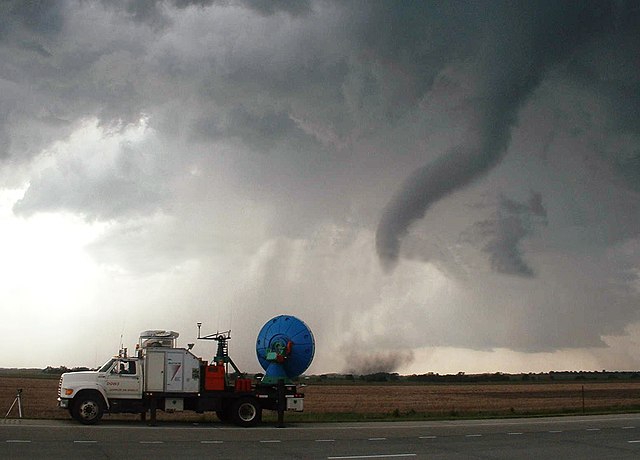Descending reflectivity core
A descending reflectivity core (DRC), sometimes referred to as a blob, is a meteorological phenomenon observed in supercell thunderstorms, characterized by a localized, small-scale area of enhanced radar reflectivity that descends from the echo overhang into the lower levels of the storm. Typically found on the right rear flank of supercells, DRCs are significant for their potential role in the development or intensification of low-level rotation within these storms. The descent of DRCs has been associated with the formation and evolution of hook echoes, a key radar signature of supercells, suggesting a complex interplay between these cores and storm dynamics.
Doppler On Wheels (DOW) radar. Used for micro-scale and near-surface based analysis of the atmosphere
The May 16, 1977 Shamrock, Texas tornado, which had an observed DRC associated with its formation.
Doppler on Wheels is a fleet of X-band and C-band mobile and quickly-deployable truck-borne radars which are the core instrumentation of the Flexible Array of Radars and Mesonets affiliated with the University of Illinois and led by Joshua Wurman, with the funding partially provided by the National Science Foundation (NSF), as part of the "Community Instruments and Facilities," (CIF) program. The DOW fleet and its associated Mobile Mesonets and deployable weather stations have been used throughout the United States since 1995, as well as occasionally in Europe and Southern America. The Doppler on Wheels network has deployed itself through hazardous and challenging weather to gather data and information that may be missed by conventional stationary radar systems.
DOW 7 on display at the USA Science and Engineering Festival in 2010.
A Doppler on Wheels unit (DOW 3) observing a tornado near Attica, Kansas




